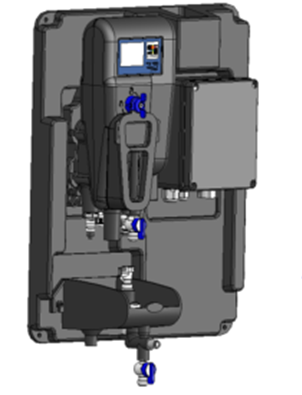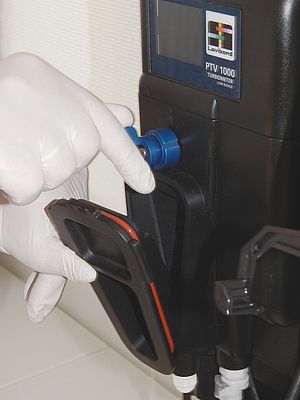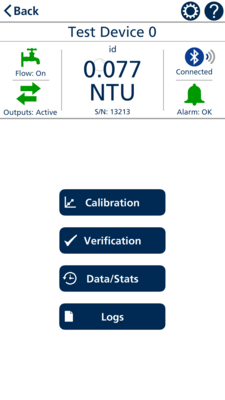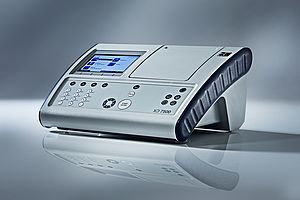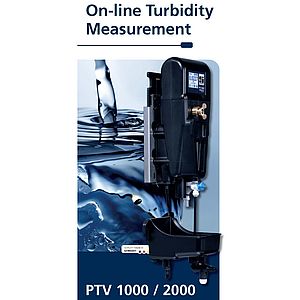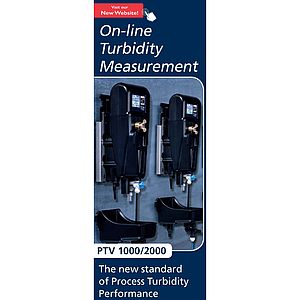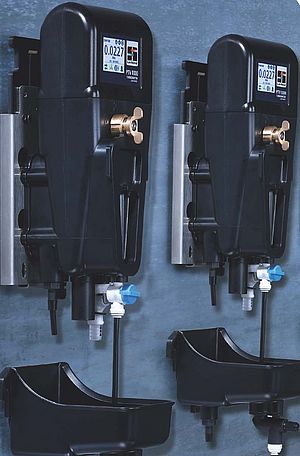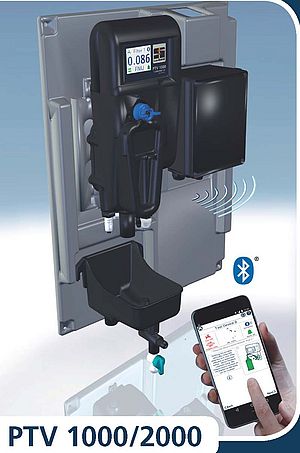In most European countries‘ drinking water directives and regulations, turbidity as indicative parameter is mandatory with a limiting value of 1 NTU; in Asia below 5 NTU is common.
Governmental authorities have a large interest in monitoring this parameter since beside the unwanted optical impression of turbid water, more serious phenomena of upcoming pathogene germs might be hidden behind a turbid water.
The natural reason of particles in water is e.g. silt, clay and dust, but if they are not retained effectively during filtering, they might act as collectors and reflectors of mostly used disinfection gases and radiation. From these shielding mechanisms, existing turbidity is necessary to evaluate the disinfection demand in drinking water.
Lovibond® Water Testing, trademark of the worldwide company Tintometer Group, located in Dortmund, Germany, known as manufacturer of analysis instrument for lab use and test kits is now offering a series of on-line (24/7) turbidimeters for low range filter effluent monitoring in drinking water processing and plant optimization. For the development of these instruments, a team of globally recognized turbidity experts has been assigned with the task to create a new process instruments that addresses all of the issues customers struggle with while using their current turbidity systems.
The measurement principle is based on the detection of scattered light. When a water sample is exposed to light, present particles will scatter this emitted light to all directions (see Pic 2). As light sources, long-lasting and semiconductor-based LEDs are provided. According to ISO 7027 in PTV 1000 an infrared LED 860 nm light source and for EPA regulation a white light LED (PTV 1000) as well as a red light LED source (PTV 2000) will be provided. In all cases, scattered light will be detected from 90 degrees orientation from the light beam (Nephelometry). The detector signals will be compared with related signals transformed from referenced turbidity (linear formazine calibration curve ). In case of EPA compliant white light source and red light LED source, the results are displayed as NTU (nephelometric turbidity units). When using the ISO 7027 compliant infrared-LED, the reported units are FNU (formazine nephelometric units).
Innovative Features
Four innovative features are associated with the introduction of this new systems. Sustainable solutions of questions regarding the mitigation of scaling and air bubbles as well as design- and constructive considerations to realize low flow rates ( from 30 ml/min ) and low maintenance requirements have been the main focus of this instrument development. Moreover, a patented bubble-free method for calibration and verification using ready prepared and stabilized formazine with no user risk to come in contact with the standard solution has been developed.
Air bubbles have no chance to interfere with the measurement, since the sample stream reaches an integrated and completely newly constructed and system-integrated air bubble trap (patented, see Pic.3). For cleaning purpose, the cover of this device is easily accessible from the front side of the turbidimeter and can be removed and set easily.
In addition to this mechanical elimination, electronic bubble detection can also be used to remove the detection signals typically generated by ultra-fine bubbles.
Behind the bubble trap, the continuously conveyed water reaches the measuring chamber and following the sample stream passes through a magnet-inductive element with which the continuous flow is monitored.
The sample leaves the device via a discharge port, which also allows a simple and clean possibility of sample grabbing for testing purposes (e.g. with a laboratory turbidimeter).
With no risk of user contact with formazine during calibration and/or verification, it becomes safer, easier and more reliable when using TCalplus ™ calibration bags.
These bags contain stabilized formazine solutions with defined FNU/NTU values, filled with volumes adjusted the flow body volumes of PTV 1000/2000. The bag material protects the solution from oxygen and UV radiation; both conditions which lead to a rapid degradation of formazine. The bag with hose and inlet coupling is simply attached to the turbidimeter and then raised above the measure chamber. In this way, the solution can flow into the measuring chamber free of bubbles by the hydrostatic pressure applied under such conditions. After a stable calibration/verification value has been reached, the liquid flows back after the TCalplus ™ bag has been lowered. This process takes less than a minute.
Due to the small volume of the measuring chamber, just about 250 ml of calibrant solution are required for calibration or verification. In addition to calibration with the primary standard formazine, any other turbidity standard material, which can be referenced to formazine can be used.
"Smart Control”
An absolute novelty in on-line and process analytics is the "smart control" of the PTV series instruments via the mobile application software AquaLXP ™. This eliminates the investment in the otherwise usual controller unit. The control app is provided for smartphones and tablets with Android or iOS operating systems.
Since today's and, above all, the future generation of users is familiar with such end devices from day-to-day life, there is no need for an extensive enrollment of the controller functions and enables a more efficient focus on analytical and technical facts. This monitoring and control solution also allows the simultaneous control of several turbidity meters with only one terminal at the same location by means of secure Bluetooth technology (see Pic. 5 ).
The connection of the device control via the app can alternatively be carried out via existing USB port. Output for 0 / 4-20 mA as standard and additional optional interfaces for data transmission via Modbus or Profibus for the process-based transmission of measured data are provided. In addition, AquaLXP ™ software has extensive and complementary logging, data transfer, trend graphics and mathematical evaluation functionality.
Author: Dr. H. Hohmann, Tintometer GmbH


